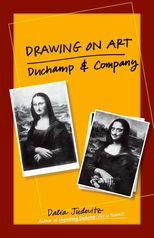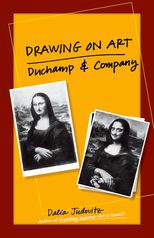Drawing on Art: Duchamp and Company
Drawing on Art: Duchamp and Company
Cite
Abstract
Marcel Duchamp’s 1919 readymade, L.H.O.O.Q., which he created by drawing a moustache and goatee on a commercial reproduction of the Mona Lisa, precipitated a radical reevaluation of the meaning of art, the process of art making, and the role of the artist. This book explores the central importance of appropriation, collaboration, influence, and play in Duchamp’s work—and in Dada and Surrealist art more broadly—to show how the concept of art itself became the critical fuel and springboard for questioning art’s fundamental premises. The book argues that rather than simply negating art, Duchamp’s readymades and later works, including films and conceptual pieces, demonstrate the impossibility of defining art in the first place. Through his readymades, for instance, Duchamp explicitly critiqued the commodification of art and inaugurated a profound shift from valuing art for its visual appearance to understanding the significance of its mode of public presentation. And if Duchamp literally drew on art, he also did so figuratively, thus raising questions of creativity and artistic influence. Equally destabilizing, the book writes, was Duchamp’s idea that viewers actively participate in the creation of the art they are viewing. In addition to close readings ranging across Duchamp’s oeuvre, even his neglected works on chess, the book provides interpretations of works by other figures who affected Duchamp’s thinking and collaborated with him, notably Francis Picabia, Man Ray, and Salvador Dalí, as well as artists who later appropriated and redeployed these gestures, such as Enrico Baj, Gordon Matta-Clark, and Richard Wilson. As the book makes clear, these associations become paradigmatic of a new, collective way of thinking about artistic production that decisively overturns the myth of artistic genius.
-
Front Matter
-
1
Critiques of the Ocular: Duchamp and Paris Dada
-
2
The Spectacle of Film: Duchamp and Dada Experiments
-
3
Endgame Strategies: Art, Chess, and Creativity
-
4
Pointing Fingers: Dalí’s Homage to Duchamp
-
5
The Apparatus of Spectatorship: Duchamp, Matta-Clark, and Wilson
-
Concluding
Remarks: Mirrorical Returns
-
End Matter
Sign in
Personal account
- Sign in with email/username & password
- Get email alerts
- Save searches
- Purchase content
- Activate your purchase/trial code
Institutional access
-
Sign in through your institution
- Sign in with a library card Sign in with username/password Recommend to your librarian
Institutional account management
Sign in as administratorPurchase
Our books are available by subscription or purchase to libraries and institutions.
Purchasing information| Month: | Total Views: |
|---|---|
| October 2022 | 1 |
| January 2023 | 1 |
| February 2023 | 3 |
| February 2023 | 1 |
| May 2023 | 1 |
| May 2023 | 7 |
| March 2024 | 1 |
| March 2024 | 1 |




Get help with access
Institutional access
Access to content on Oxford Academic is often provided through institutional subscriptions and purchases. If you are a member of an institution with an active account, you may be able to access content in one of the following ways:
IP based access
Typically, access is provided across an institutional network to a range of IP addresses. This authentication occurs automatically, and it is not possible to sign out of an IP authenticated account.
Sign in through your institution
Choose this option to get remote access when outside your institution. Shibboleth/Open Athens technology is used to provide single sign-on between your institution’s website and Oxford Academic.
If your institution is not listed or you cannot sign in to your institution’s website, please contact your librarian or administrator.
Sign in with a library card
Enter your library card number to sign in. If you cannot sign in, please contact your librarian.
Society Members
Society member access to a journal is achieved in one of the following ways:
Sign in through society site
Many societies offer single sign-on between the society website and Oxford Academic. If you see ‘Sign in through society site’ in the sign in pane within a journal:
If you do not have a society account or have forgotten your username or password, please contact your society.
Sign in using a personal account
Some societies use Oxford Academic personal accounts to provide access to their members. See below.
Personal account
A personal account can be used to get email alerts, save searches, purchase content, and activate subscriptions.
Some societies use Oxford Academic personal accounts to provide access to their members.
Viewing your signed in accounts
Click the account icon in the top right to:
Signed in but can't access content
Oxford Academic is home to a wide variety of products. The institutional subscription may not cover the content that you are trying to access. If you believe you should have access to that content, please contact your librarian.
Institutional account management
For librarians and administrators, your personal account also provides access to institutional account management. Here you will find options to view and activate subscriptions, manage institutional settings and access options, access usage statistics, and more.